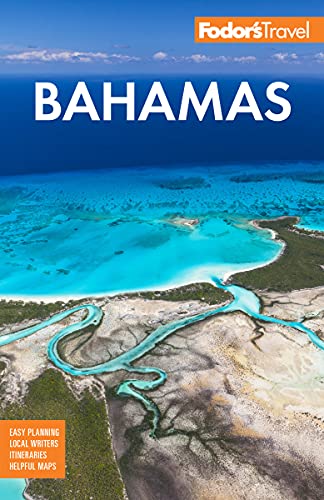Exuma Cays Land and Sea Park
Created by the Bahamas National Trust in 1958, the 176-square-mile Exuma Cays Land and Sea Park was the first of its kind in the world—an enormous open aquarium with pristine reefs, an abundance of marine life, and sandy cays.
The park appeals to divers, who appreciate the vast underworld of limestone, reefs, drop-offs, blue holes, caves, and a multitude of exotic marine life including one of the Bahamas' most impressive stands of rare pillar coral. Since the park's waters have essentially never been fished, you can see what the ocean looked like before humanity. For landlubbers there are hiking trails and birding sites; stop in the main office for maps. More than 200 bird species have been spotted here. At Shroud Cay, jump into the strong current that creates a natural whirlpool whipping you around a rocky outcropping to a powdery beach. On top of the hill overlooking the beach is Camp Driftwood, made famous by a hermit who dug steps to the top leaving behind pieces of driftwood. Between Conch Cut and Wax Cay Cut 242/225–1791, VHF Channel 9 or 16 www.exumapark.info.
Best Time to Go
In summer the water is as warm as bathwater and usually just as calm. The park has vastly fewer boats than in the busy winter season, when the channel becomes a blue highway for a parade of sailing and motor vessels. Bring insect repellent in summer and fall.
Best Ways to Explore
By Boat. Boaters can explore the sandy cays and many islets that are little more than sandbars. The water is so clear it's hard to determine depths without a depth finder, so go slow and use your charts. Some routes are only passable at high tide. Get detailed directions before you go into the park, and be sure to stop by the park headquarters on Warderick Wells Cay for more information. Make sure you have a VHF marine radio on the boat or carry a handheld VHF radio so you can call for help or directions.
On Foot. The park headquarters has a map of hiking trails—most are on Warderick Wells Cay—that range from 2-mile walks to two-hour treks. Wear sturdy shoes, because trails are rocky. You'll see red, black, and white mangroves; limestone cliffs; and lots of birds—white-tail tropic birds, green herons, blue herons, black-bellied plovers, royal terns, and ospreys. Take sunscreen and water, and be aware that there's very little shade.
By Kayak. Visitors do sometimes take kayak trips from neighboring cays into the park and camp on the beach. The park has two kayaks that can be used free of charge by boaters moored in the park. As you paddle, look for sea turtles, which might pop up beside you.
Underwater. You have to go underwater to see the best part of the park—spiny lobsters walking on stilt legs on the sandy floor, sea grass waving in the currents, curious hawksbill turtles (critically endangered), solemn-faced groupers, and the coral reefs that support an astonishing range of sea life. Bring your own equipment.
Fun Fact
The park has one native land mammal—the hutia, a critically endangered nocturnal rodent that looks similar to a gray squirrel.
Making a Difference
How successful has the Exuma Cays Land and Sea Park been? About 74% of the grouper in the northern Exumas' cays come from the park. Crawfish tagged in the park have been found repopulating areas around Cat Island 70 miles away. The concentration of conch inside the park is 31 times higher than the concentration outside. This conservatively provides several million conchs outside the park for fishermen to harvest each year.
(above) Boats anchored in the bay at Warderick Wells Cay, the park's headquarters.




